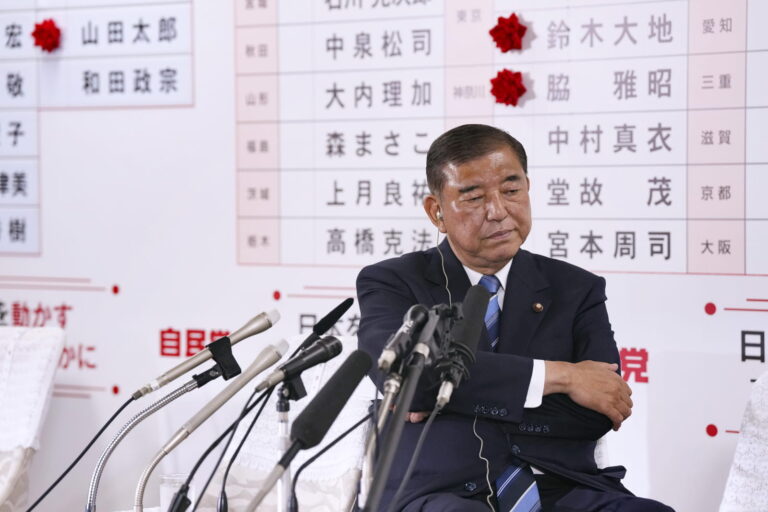Passing through Immigration and Customs at Narita Airport outside Tokyo on Sunday night was the quickest it has been for a few years. The usual winding lines of tired travellers were non-existent as I made my way through the airport and on into town. The atmosphere this time was remarkable because I was walking into an Upper House election campaign which had been fought largely on a “Japanese People First” platform promoted by new conservative party, Sanseito.
Prime Minister Ishiba Shigeru now faces the reality of failing to keep a majority in after the weekend the Upper House election, as well as at last year’s Lower House ballot. Despite Ishiba expressing his intention to continue in the role, by Monday morning, party heavyweights were openly expressing the need for change.
On one level, this reflects an ongoing factional battle within the party, those who want to continue the late Abe Shinzo’s legacy and those who want to curb those nationalistic excesses. Ishiba has long been a critic of Abe-style politics and so finds himself appealing to the electorate to stick with his approach in the face of ongoing domestic and international policy issues – a kind of ‘now is not the time to change’ approach. This is because Japan, like other nations, faces up to the uncertainty of the Trump tariff regime and defence pressures.
Into this mix, new party Sanseito has exploited the politics of grievance which is characterising political participation around the world. Campaigning on a platform of “Japanese People First”, it appears to have secured 14 seats. The Kokumin Democratic Party, the more conservative of the two democratic parties, surprisingly increased its presence substantially as well. Exit surveys indicate that voters in their 20s to 50s were attracted to this not-LDP-but-conservative party choice. This ageing voter base is likely to be the focus of further LDP angst.
The next few days will be filled with congratulations and recriminations, jockeying for coalition possibilities and promises.
The problems facing the LDP are indicative of worldwide trends. It is easy for political analysts to look at these results and say this was Japan’s turn to show “our politics is broken”, and then ask, “how do we stop this march towards neo-nationalism?” For those of us who have spent a lifetime watching elections, a more honest assessment is to note that there are changes happening that political professionals are reluctant to acknowledge yet might be folly to ignore.
Sanseito is really just the latest in a string of emergent political parties in Japan in the last decade that have sought to capture social angst and societal grievances. A few years ago, we talked about the change the Ishin no Kai would bring to politics, then the erratic (anti)NHK Party promised much and delivered little. Over on the progressive/left end of the scale, former actor Yamamoto Taro’s Reiwa Shinsengumi is chipping away at the ground previously held by the Communist Party (JCP). The Social Democrat Party (Shaminto), all that remains of the historic Socialist Party (JSP), secured one seat, or 2% of the vote, just barely making the requirement to remain a party in parliament.
In a country where voting is not compulsory, the turnout of 58%, an increase of 5% on the 2022 election, is significant. Voting is effectively a first past the post system and with 14 parties and a large group of independent and non-aligned candidates to choose from, it is not surprising that votes were very dispersed.
The next few days will be filled with congratulations and recriminations, jockeying for coalition possibilities and promises. If as the results suggest, Ishiba failed by just three seats to keep a bare majority in the Upper House, the LDP will need to examine why its failures have cultivated a plethora of mini-me parties which the voters found more promising and which have chipped away at their voter base. Changing out Ishiba for populist Koizumi Shinjiro or nationalist and Abe prodigy Takaichi Sanae is unlikely to solve problems in the short term.
The parties on the progressive side also need to confront searching questions. The Constitutional Democrats, the Communist Party, and the Social Democrats will need to ask themselves how they have failed to adjust to the changing socio-political environment. These challenges are not unique to Japan.
The ramifications of this election will take some time to unfold. This may not be on the scale of the changes to Japanese politics in the mid-1990s, but for those of us concerned with the future of political engagement, this result presents us with another one to consider.

